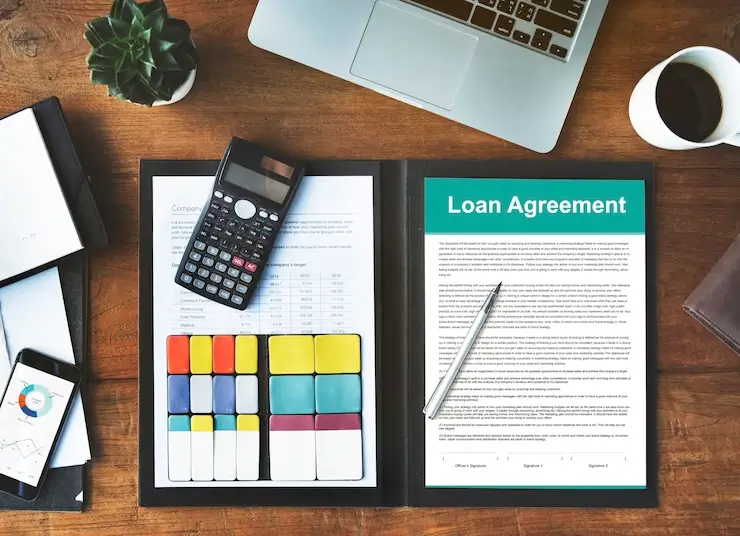How do you calculate a payment on a HELOC – A Home Equity Line of Credit (HELOC) might give you the money you require. If you’re a homeowner seeking a flexible lending alternative. However, it’s crucial to comprehend how are HELOC payments calculated or determined and how they could affect your budget before taking out a HELOC.
In this post on how do you calculate a payment on a HELOC?, we’ll walk you through the process of calculating HELOC payment through the HELOC Calculator while considering several things to follow and it becomes the best way to get a HELOC loan easy as much as.
Read More - HELOC vs Interest Only HELOC
Table of Contents
How Do You Calculate A Payment on A HELOC?
You may use a HELOC Calculator to make the process of calculating HELOC payment easier. You may enter details like the Home Value, Current Mortgage Balance, Maximum Loan to Value Ratio (LTV), and the frequency of payments into these online calculators to know how to calculate HELOC.
The detailed breakdown of your monthly or biweekly payment provided by the HELOC calculator enables you to budget appropriately. In addition, they take the draw term, payback duration, and prospective balloon payments into account.
Read More - What Can a HELOC Be Used For?
Understanding HELOC
A revolving credit product called HELOC enables homeowners to borrow money using the equity they have accumulated in their homes. It offers flexibility by enabling you to borrow money up to a pre-set credit limit as needed. With a HELOC, you are able to borrow, pay it back, and then borrow again during the draw term, which is normally 5 to 10 years.

Read More - Difference Between Home Equity Loan and Heloc
Components of a HELOC Payment
It’s crucial to take into how do you calculate a payment on a HELOC, and all of the factors that go into calculating HELOC payment.
1. Interest Rate: A HELOC’s interest rate is frequently changeable and correlated with the prime rate. It is made up of the prime rate plus a margin that the lender chooses. It is essential to comprehend how the interest rate impacts your payment since changes in the interest rate will have an effect on the total amount you owe.
2. Principle: The principle of a HELOC loan is the amount borrowed. It stands for the unpaid debt that has to be paid back. The principle goes down as you pay, bringing the whole sum down.
3. Balloon Payment: At the conclusion of the draw period, some HELOCs may impose a balloon payment. This indicates that you must either pay the outstanding debt in full or refinance it at a fixed rate. It’s critical to be informed about this prospective lump sum payout and make preparations in advance.
4. HELOC payments can usually be made every created every month or every two weeks. Your annual payment volume is influenced by the frequency of prices, which might have an impact on your financial planning and budgeting.
Read More - Choosing the Right HELOC Repayment Plan
Interest Rate Calculation – How Do You Calculate a Payment on a HELOC

A HELOC’s interest rate is frequently adjustable and susceptible to change. To prepare for any changes in your payment amount, it is crucial to understand how the interest rate is determined.
The lending institution’s margin is multiplied by the prime rate to arrive at the interest rate. Your interest rate would be 6%, for instance, if the prime rate is 4% and the lender’s margin is 2%. The interest rate on your HELOC will be directly impacted by changes in the prime rate, which will change the amount of your payments.
Principal Calculation
You must take into account the outstanding balance, sometimes referred to as the principle, when calculating HELOC payment. The principal is the sum that you borrowed but has not yet paid back. As you make payments, the principle goes down, which lowers the total amount owed.
You can use an amortization schedule given by your lender to see how your payments impact the principle. This schedule breaks down each payment, showing how much goes to principal reduction and how much goes to interest.
Balloon Payment
Some HELOC impose a balloon payment at the conclusion of the draw period. This indicates that you must settle the outstanding debt in full. If you don’t, you can have to pay fines or turn the remaining sum into a fixed-rate loan.
It’s important to consider the potential balloon payment when Calculating HELOC payment and making any necessary preparations. To manage this last lump sum payment, think about conserving money or looking into refinancing possibilities.
Payment Frequency
Depending on your preferences and financial position, HELOC payments can be paid monthly or biweekly. The overall quantity of payments paid throughout the course of the year is impacted by payment frequency.
If you choose a biweekly payment schedule, you will have 13 monthly payments totaling 26 in a year. By doing this, you may be able to pay off your HELOC more quickly and pay less interest overall.
Impact of Interest Rate Changes
It is crucial to think about the possible effects of interest rate fluctuations on your payment amount because a HELOC’s interest rate is variable. Your interest rate will grow along with the prime rate, increasing your monthly payments. On the other hand, if the prime rate falls, so will the size of your payment.
You can investigate options like refinancing or using a fixed-rate conversion option provided by your lender to control prospective interest rate adjustments while calculating HELOC payment. These choices can offer stability and support efficient money management.
Factors to Consider- How do you calculate a payment on a HELOC
Before knowing how do you calculate a payment on a HELOC loan taking, your HELOC payment should be determined by taking into account the following:
- LTV – Loan to Value – The percentage of your home’s appraised worth that you can borrow against is known as the loan-to-value (LTV) ratio. A greater ratio may lead to higher borrowing rates or harsher restrictions because lenders often have particular LTV ratio criteria.
- Credit Score and Credit History: Your credit score and credit history have a big impact on the HELOC’s conditions and interest rate. Better rates and more benevolent loan terms may be obtained with a higher credit score.
- Repayment – The payback term is the amount of time you have to pay the remaining sum. While longer repayment terms could mean cheaper monthly payments, they might also mean more interest paid altogether over the course of the loan.
You can understand how do you calculate a payment on a heloc and calculate your HELOC payment more effectively by taking these elements into account.
Conclusion
Understanding the different factors involved in how to calculate heloc, including the interest rate, principle, balloon payment, and payment frequency, is necessary to calculate a HELOC payment. You can precisely calculate your payment amount and manage your budget by taking these things into account and using HELOC calculators.
When choosing a HELOC, additional considerations including the loan-to-value ratio (LTV), credit score, and payback time should be taken into account. Always get personalized advice from your lender or financial advisor based on your unique situation.
Hope you like our guide – how do you calculate a payment on a HELOC? Hope all of your queries related to the topic are resolved.

